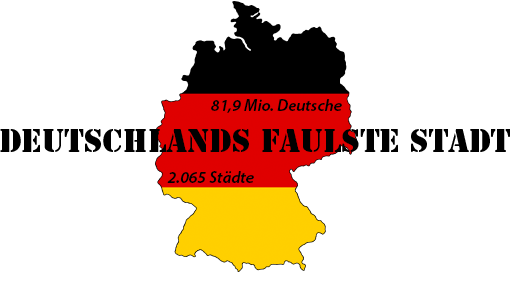
Well, the easiest way is to get a tax consultant (Steuerberater) to do it, but sometimes, this can turn expensive or you don’t know any that you can trust. For business owners, using a tax consultant is not optional, if you aren’t well versed with the tax laws, a tax consultant will save you hours, money and possibly prison (if end up filing your taxes wrong).
Timeline
For business owners, you have to file your tax returns latest every 2 years. It’s recommended, you file annually.
For employees or students (only if you are paying Lohnsteuer), you can wait up to four years. For example, this year, 2018, you can file returns for 2017, 2016, 2015 and 2014.
The whole process for filing the tax returns can take up to 3 months from the day you hand in the completed forms until you get the refund in your account.
Is it worth it?
Before we get into how you can file for tax returns, there are a few issues to consider, to decide whether to undertake this very boring and tiring assignment.
Lohnsteuer:
Did you pay any Lohnsteuer for that year? Essentially, your tax returns are based on the amount of tax you paid and if you paid more taxes than required, then you get a refund. If you paid no taxes, then there’s no refund to worry about. For those on mini-jobs or midi-jobs, no income tax is deducted so filing a tax return is futile.
Deductions:
These are basically where all the money rests (is that a direct translation from Swahili, oh well). These are costs you incurred that should have NOT been taxed the same as your kawaida costs. Therefore, when you file your tax returns, Finanzamt refunds you the amount of tax incurred on this amount. Some of these deductions you should consider are:
Grundfreibetrag (basic income allowance): This is the amount everyone is allowed to take home tax-free. If you earned below this amount and paid taxes, then you definitely need to file a tax return for that refund.
Entfernungspauschale (commuter tax allowance): You can claim 30 cents in expenses per kilometre (one-way) for your commute to and from work – regardless of whether you drive, bike, walk or take the train.
Werbungskosten (income-related expenses): Using your private phone and internet for work, special work clothes, job application costs, using a room at home as an Arbeitszimmer all fall under this umbrella, for which you’re automatically given a €1000 annual allowance. Expenses beyond this need to be documented.
Vorsorgeaufwand (insurance): Life insurance, accident insurance, liability insurance, private pension schemes can all be written off to some degree. Health insurance contributions, whether private or gesetzlich, are also tax deductible. Hold on to your annual Beitragsnachweis (proof of contributions)!
Kinderfreibetrag (child allowance): You have kids and your income is above EUR 60000 per year (changes each year, so check for the year you’re filing the returns for) and would therefore benefit more by the Kinderfreibetrag than the monthly Kindergeld.
| 2018 | 2017 | 2016 | 2015 | bis 2014 |
|---|---|---|---|---|
| 7.428 EUR | 7.356 EUR | 7.248 EUR | 7.152 EUR | 7.008 EUR |
Kinderbetreuung (expenses for childcare): Kindergarten, after-school care (Hort) and au pairs are all largely tax-deductible. Submit copies of contracts, monthly bank transfers, etc.
Unterhalt (support for dependents): The amount spent supporting a spouse, children or aging parents . This includes money sent to your parents in Kenya. (READ: How to have your Remittances Exempt from Taxes)
Weiterbildung (expenses for further training): Spent some money going for a training course, or even went back to Uni? That amount is liable to tax refund.
Dienstreisen (expenses for work-related travel): if you travel a lot for work, then this is where your highest refund will usually come from. Those trips away from the office, conferences and events, add them all and have the invitations and attendance forms as proof. Trips between eight and 24 hours long get an allowance of €12 to be deducted for extra meals. Trips lasting more than 24 hours are granted an allowance of €24 per day. Minor expenses for things like public transportation to work during the trip have a cap of €10 per day.
Doppelte Haushaltsführung (dual households): You have your main house but your employer gave you a new job/project in another city and now you have a second apartment. You like the first city and aren’t ready to give it up, then keep both. Register in both cities with the first as your “main” Address.
Home office: Got a home office? That needs to be included in your tax return.
Umzugskosten (moving costs): Did you have to move due to work? Then all the expenses incurred for that move should be written off in your tax return.
Renovierungsarbeit (Renovation costs): If you have work done on your private home, you can deduct 20 percent of expenses for regular services including gardeners, window cleaners and chimney sweepers, capped at €4,000 per year. For hiring specialized tradesman for set projects like roof work, repairs, and other renovations, you can also deduct 20 percent, with a cap of €1,200
Methods of Filing the Tax Returns
Option 1: BFV Forms
The most straightforward method but not the easiest, is to download the Tax Returns Forms on the Bundesfinanzverwaltung website. Downloading those forms and filling them out by hand, is the closest you’ll come to losing your mind, but if you’re interested, go right ahead.
For employees, you’ll need the following forms: (the year depends on the year whose tax return you’re filing)
- ESt 1 V 2018 – contains personal details like your address, Tax ID number (Steueridentifikationsnummer) etc
- Anlage N 2018 – contains info on your income and amount of income tax paid
- Anlage Vorsorgeaufwand 2017 – contains info on your insurances
Option 2: ELSTER Websites
In 2013, the government moved from the old school paper based tax returns and introduced ELSTER (ELektronische STeuerERklärung). ELSTER is a government run website that allows you to file your tax returns online without any papers. ELSTER is basically between the BFV forms and a website. The website is run by the government and is completely free.
To use the site however, you need to register online and they send you the log in details via post (so much for online, ha?).
Check out the Toytown Wiki for an in-depth explanation on ELSTER.
I tried it a couple of years ago, got the log in details and even downloaded the software, but it was just too complicated or I was just too impatient. I’d love to read about your experiences using ELSTER if you’ve tried it.
Option 3: Websites
In the last couple of years, there are more websites and software programs to help you out with the tax returns. Some websites are even in English, to try and simplify this burden.
One advantage is you can use the program on any computer and all you need to do is sign in to access your documents. If you need to work on your tax returns away from home, then these will definitely be a great option.
They aren’t free though, with the fee ranging from 20 – 40 Euros. Although, you don’t have to buy any software each year, you pay per tax return sent to Finanzamt. So either way, the cost remains the same.
- SteuerGo
- SmartSteuer
- German Taxes
- Studentensteuererklärung (offered by the same company as German Taxes)
Option 4: Software
These are the most common, I’m sure your favourite supermarket carries them around Summer, from ALDI, LIDL, REWE, EDEKA and Kaufland, I’m sure you’ll find them latest around September. However, you can always order for them online from your favourite company. The cost for these also ranges from 20 – 40 Euros. If you have a Mac, please confirm the software works. Most of these are unfortunately only made for Windows. A few favourites are:
- Lexware’s Taxman
- WISO steuer: Sparbuch
- SteuerSparErklärung plus
- t@x Professional
- Taxman
For Mac users, you luckily don’t have to get the physical CD of the program, you can download them from the App Store, some favourites are:
- WiSO Steuer
- SteuerSparErklärung
A disadvantage of these Software programs vs. websites is definitely the fact that you have to pay each year to get the new version. The reason they have a new version each year is to include the changes made in regulation that year.
Option 5: Lohnsteuerverein (Income Tax Club)
Across the country there are numerous clubs that help members file their tax returns. Usually they have qualified tax consultants who help you file your tax returns. However, to enjoy the services, you have to pay a membership fee. Most of these clubs charge depending on your annual gross income.
You can find your local Lohnsteuerverein on the Bundesverband Lohnsteuerhilfevereine e.V. (BVL)
| Bemessungsgrundlage | Mitgliedsbeitrag in Euro |
| in Euro | inkl. gesetzl. USt. |
| bis 10.000 | 49,- |
| 10.001 – 15.000 | 69,- |
| 15.001 – 20.000 | 82,- |
| 20.001 – 25.000 | 92,- |
| 25.001 – 30.000 | 105,- |
| 30.001 – 35.000 | 118,- |
| 35.001 – 40.000 | 125,- |
| 40.001 – 45.000 | 135,- |
| 45.001 – 50.000 | 145,- |
| 50.001 – 55.000 | 162,- |
| 55.001 – 60.000 | 180,- |
| 60.001 – 70.000 | 199,- |
| 70.001 – 80.000 | 220,- |
| 80.001 – 100.000 | 250,- |
| 100.001 – 120.000 | 275,- |
| 120.001 – 150.000 | 295,- |
| ab 150.001 | 325,- |
Option 6: Steuerberater (Tax Consultant)
You can find tax consultants from various websites, however, a phone call or a visit to their offices will make sure you know whether or not they can be trusted. I’ve visited some consultants that I knew, that was the first and last time, I would be visiting their offices. Trust your instinct and ask as many questions as needed to make you comfortable handing all your personal details to this person.
How much the Steuerberater should charge is stipulated in the Steuerberatervergütungsverordnung (StBVV) § 10 – 14.
A few places you can check out to find a Steuerberater:
- Deutscher Steuerverband e.V.
- Firma.de – has a list of English speaking tax consultants
- Ageras
- DATEV
- Steuerberater Scout
- Wer kennt den besten Steuerberater?
- Lexoffice
- Steuern.de







